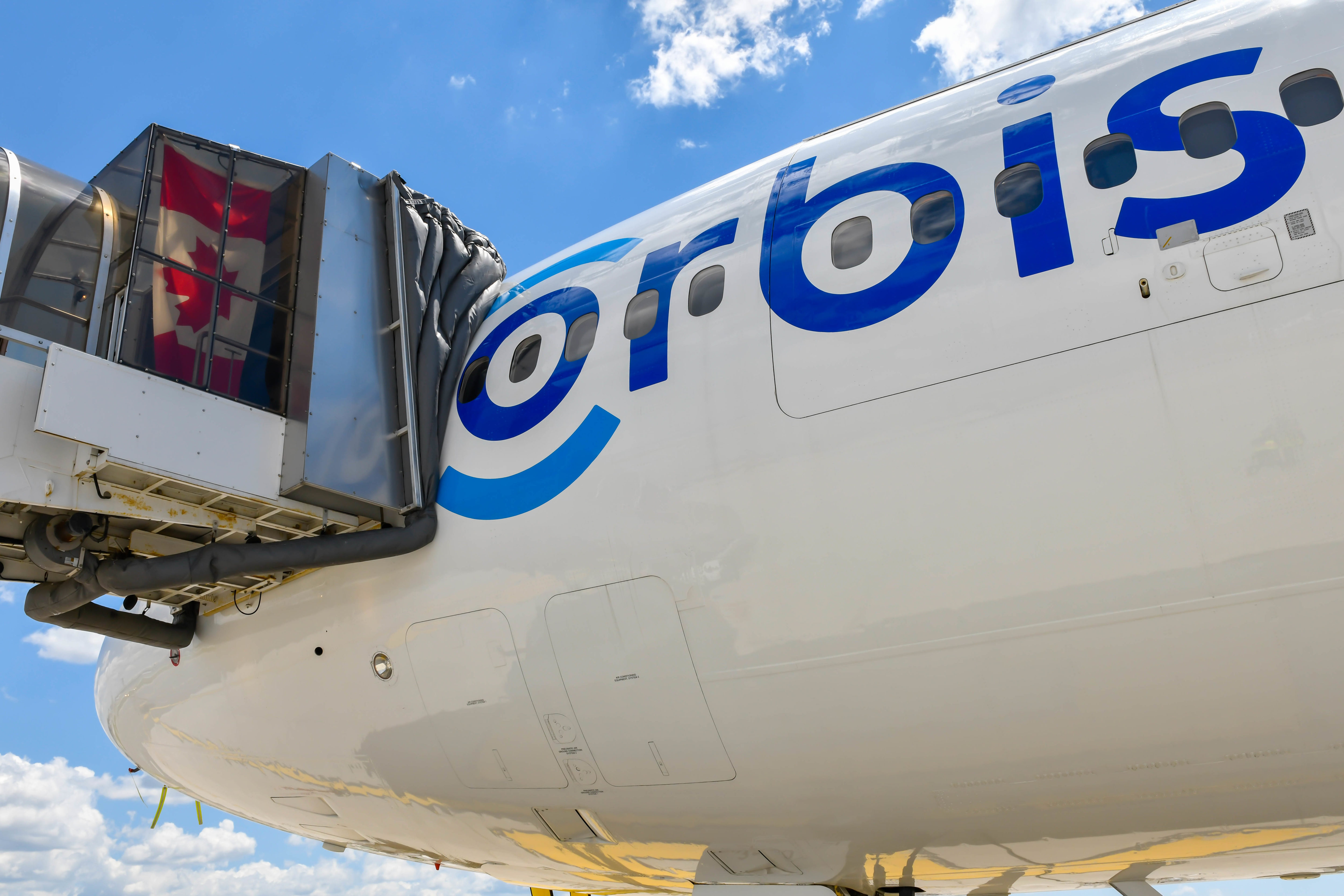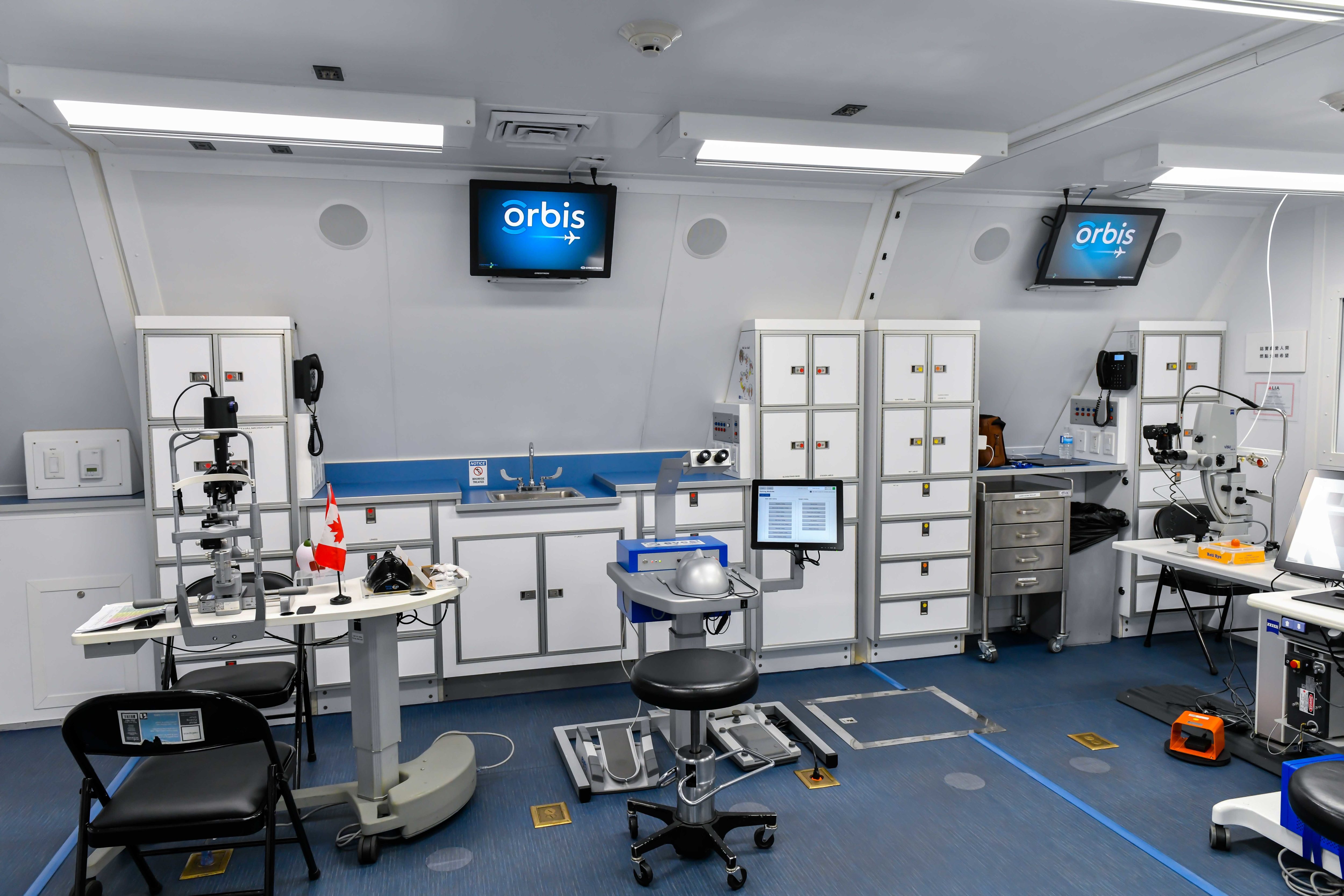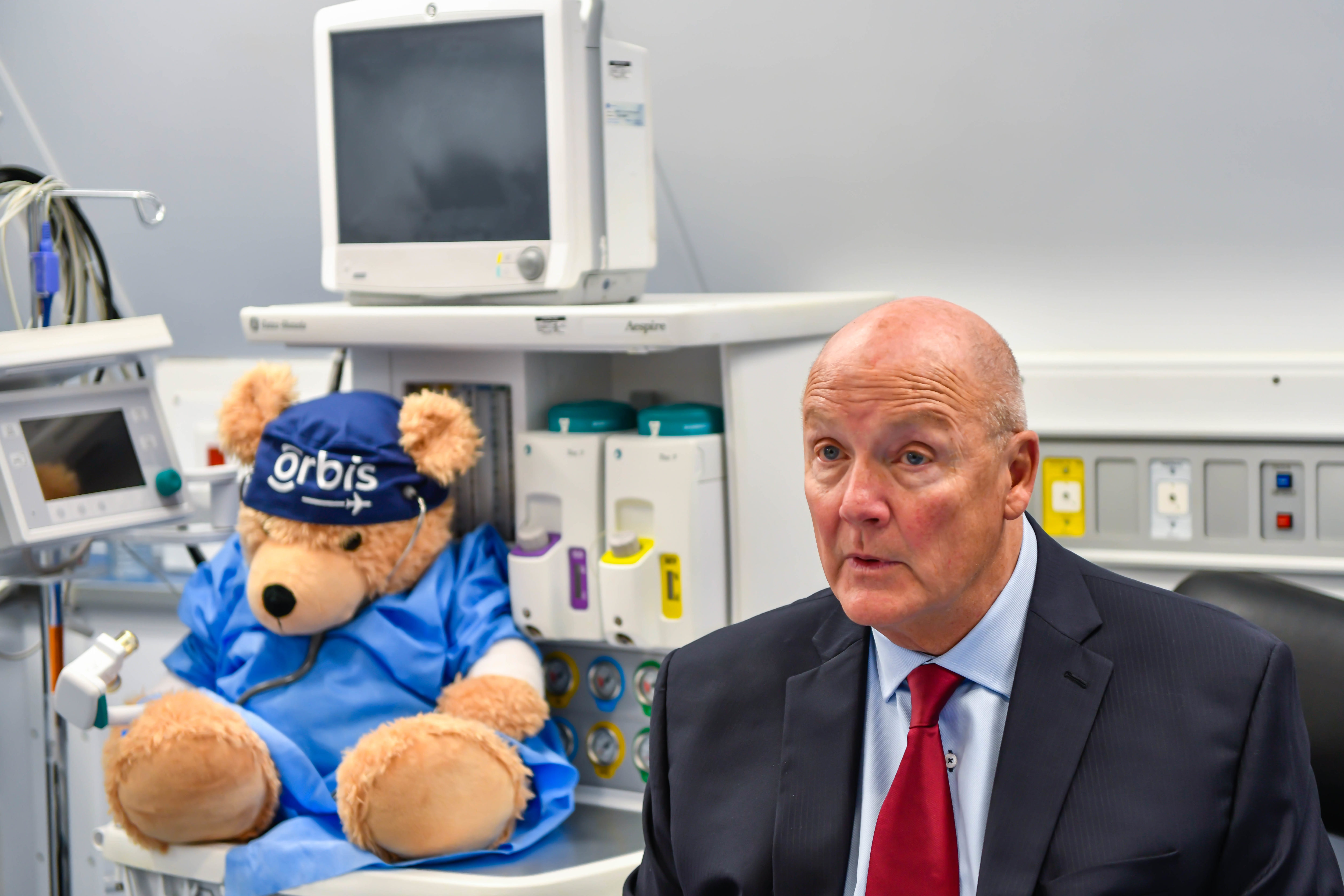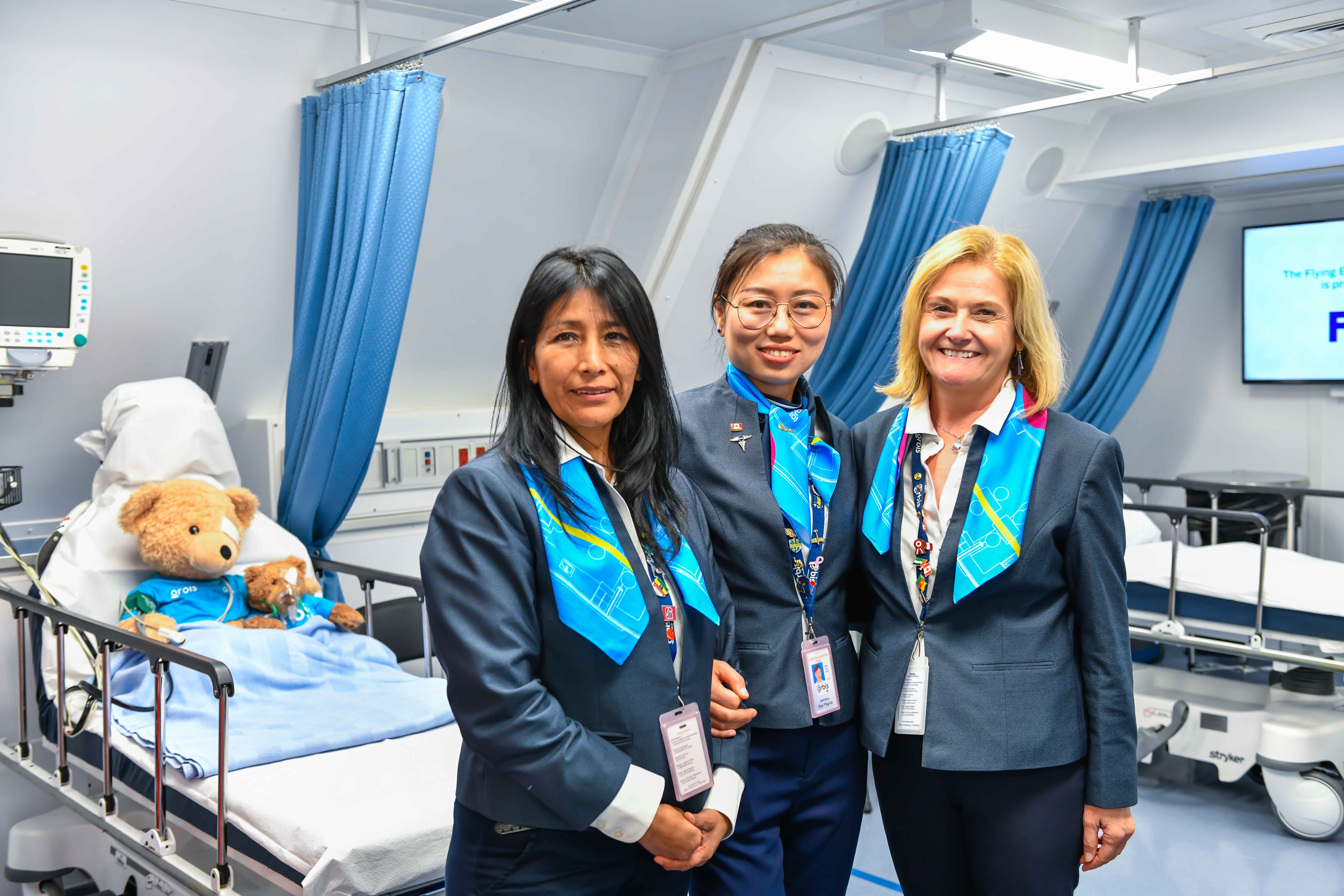Estimated reading time 11 minutes, 27 seconds.
The Orbis Flying Eye Hospital is a sight to behold.

As we approached the aircraft during its recent visit to Toronto on June 11, its bright and shiny exterior belied the fact that the MD-10 was manufactured 46 years ago in 1973.
But the aircraft itself, no matter how impressive, is merely a conduit with a noble purpose: to deliver state-of-the-art vision care and related training programs to global medical professionals.
According to Orbis, there are 253 million people around the world who are blind or visually impaired. However, a shocking 75 per cent of visual impairments can be managed or even prevented with access to surgery, treatment or even eyeglasses.
The idea for a mobile ophthalmic teaching hospital was developed in the late 1970s, when aviation and medicine came together to create the Orbis Flying Eye Hospital. In 1980, United Airlines donated its oldest Douglas DC-8 to Orbis, and through a grant from the U.S. Agency for International Development and private donations, it was converted into a mobile teaching hospital. It took off on its first mission to Panama in 1982.
A decade later, Orbis acquired a newer version of the Flying Eye Hospital, this time a Douglas DC-10. Purchased by the organization using donated funds, the larger aircraft gave the mobile hospital room to grow through the addition of more modern equipment and facilities.
Then, in 2010, FedEx donated the organization’s third-generation platform, the current McDonnell Douglas MD-10 aircraft (an upgraded DC-10 with a cockpit requiring only two crewmembers instead of three, and a common type rating with the MD-11). Interestingly, the last two letters in the jet’s registration, N330AU, is a tribute to FlightSafety International founder A.L. “Al” Ueltschi, who was an early and passionate supporter of Orbis.

While the DC-10 continued to work around the world, the MD-10 underwent a six-year renovation that would transform it into a one-of-a-kind, fully equipped mobile eye care hospital, complete with a classroom, ophthalmic examination and training simulation suite, and operating and recovery rooms.
In part, the lengthy process was due to Orbis’ desire to design the exam, operating suite and recovery room as modular components.
“The hospital structure used to be mounted to the aircraft frame,” explained Peter Allen, chairman of Orbis Canada and treasurer of Orbis International. “If we wanted to change anything, we had to get an STC [supplemental type certificate] – it was very cumbersome. So, with the cargo door in this aircraft, we created modular hospital components that are completely separate from the aircraft and can be removed if needed.”
The hospital is independent of the aircraft in other ways, too. All its systems – power, air conditioning, Internet and IT capability, water purifier and oxygen – are powered by external generators that are carried in the aircraft belly during travel. The generators run on jet fuel from the aircraft fuel tanks, making the hospital completely self-sufficient.

“When we arrive in country, all we need are stairs, patients and doctors to train,” said Allen.
Since it launched in 1982, the Orbis Flying Eye Hospital has landed in more than 95 countries around the world.
Teaching through technology
When the Flying Eye Hospital first took flight 37 years ago, there was no Internet and connected technology was the stuff of science fiction.
Today, the entire aircraft is linked through a cutting-edge audio-visual system that allows people sitting in the classroom to watch on-board surgical procedures in real time.
Most impressively, the organization’s Cybersight web portal helps medical professionals around the world stay connected to Orbis long after the Flying Eye Hospital has departed. Doctors in developing countries can access free online courses, lectures, videos, and live webinars, all through a basic smartphone.

Through the Cybersight platform, medical professionals from around the world can also view live surgeries, and can ask questions in real time.
“Today, the aircraft represents just 20 per cent of what we do in the world,” said Allen. “Through the Cybersight software program, a trained person can photograph an eye and submit it to our app. An artificial intelligence system can then detect such issues as diabetic retinopathy, glaucoma, macular disease and others.”
Last year, he said Orbis remotely screened and diagnosed 4.45 million people in the developing world, all thanks to technology.
Dr. Brian Leonard is an Ottawa-based vitreoretinal surgeon who focuses on eye problems involving the retina, macula and vitreous fluid. He has volunteered with Orbis since 1984, travelling with all three of its aircraft on more than 80 missions. He is in a unique position to comment on how technology has impacted the Orbis mission.

“It has changed night and day, all in a positive way, so that we can extend out to the world and have them extend back to us,” he told Skies. “For us, that makes it easier to foster sustainable development. But one thing that hasn’t changed over the years is the people. We have great people on this crew making enormous sacrifices to be here.”
Allen said Orbis’ 400-plus volunteers – including doctors, nurses, anesthesiologists, and logistics staff – all take time away from their practices to serve the organization. A whopping 20 per cent of medical faculty volunteers are Canadian.
In fact, Orbis as a whole is powered by volunteers. Without them, it simply would not exist.

“Ninety-three per cent of the funds we raise go directly to what we do in the field, and that wouldn’t be possible without sponsors like FedEx, for example,” said Allen.
In addition to donating the aircraft, FedEx also allows its pilots to volunteer with Orbis, repositioning the aircraft as needed. The courier company also provides parts, shipping and engineering assistance.
But FedEx isn’t alone. Many other organizations related to aviation and medicine contribute to the program.
Bruce Johnson, Orbis’ director of Aircraft Operations and project manager for the MD-10’s transformation into the Flying Eye Hospital, said that 99 per cent of aircraft parts are donated. Fuel is often comped and landing and parking fees waived.
Platform for advocacy
When the Orbis Flying Eye Hospital arrives in a country, it brings far more than medical resources and treatment.
“We teach things as fundamental as treating a patient and family with dignity and civility,” commented Leonard. “Gender equity is very big for us – if you’re a woman or girl in the developing world, you’re more likely to be blind and less likely to receive treatment.”
In fact, two out of every three blind children in the world are girls. Restoring their sight allows them to make productive contributions to their families.

On board the Orbis aircraft, translators ensure that patients and their families understand all aspects of a medical procedure. This is a crucial step in demonstrating respect and earning trust in a situation that is intimidating for patients who may have walked hours to get to the airport for treatment.
Allen said the aircraft will typically stay at each site for two to four weeks, flying medical faculty in and out on a weekly basis. Each week will see a new specialty performed, including pediatric surgery, glaucoma and cataract removal. On average, 30 to 35 per cent of patients are children.
But the Orbis Flying Eye Hospital isn’t about taking in as many patients as possible.
“We’re not about doing volume surgery,” said David Hunter Cherwek, deputy chief of Clinical Services. “We’re about quality training. All six continents work together in this operating room in what I call functional diplomacy.”
Before visiting Ottawa and Toronto recently, the aircraft was in Chile for the first time. During that trip, the emphasis was on simulation and how to set up training curriculums using new technology.
Additional applications
Allen said Cybersight is opening the doors to all kinds of exciting new possibilities.

While the aircraft was in Ottawa, for example, retired Canadian astronauts Robert Thirsk and Dave Williams participated in a livestream event. Williams performed a simulated surgery on board the aircraft, while Thirsk watched and commented in real time from his post at the Canada Aviation and Space Museum.
“In the field, we connect hospitals while we are training on board,” explained Allen. “This is of interest to astronauts for long-duration space flight.”
He said Orbis is also focused on bringing remote diagnosis capability to Canada’s isolated northern Indigenous communities.
“We are pursuing the ability with the Canadian government. There is a serious epidemic of diabetic retinopathy in remote First Nations communities.”
A leading cause of blindness, the condition can only be contained by early diagnosis.
“Right now, the only way to diagnose it is to fly the patient to a large centre,” continued Allen. “But we can train someone to photograph the eye and diagnose it remotely, so treatment can be provided.”
The implications are indeed staggering.
Leonard added some compelling statistics: “Since inception, a conservative estimate is that people aligned with Orbis have restored sight to far more than 20 million blind human eyes.”

No wonder the Ottawa eye surgeon told the CBC that Orbis staff “get up every morning and come running to work.”
That commitment is a powerful thing to see.
Check out a walk through of the Orbis Flying Eye Hospital here:
